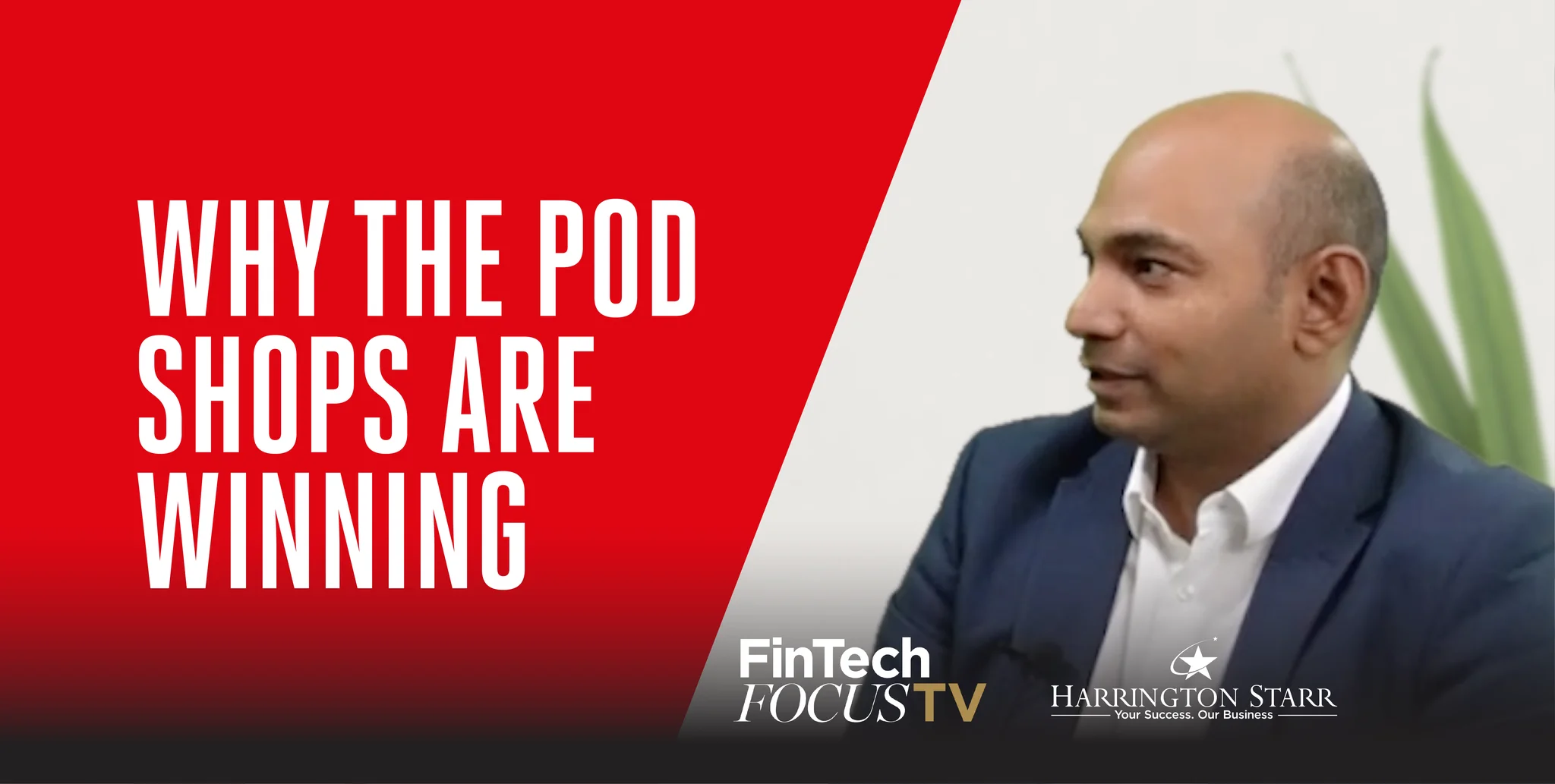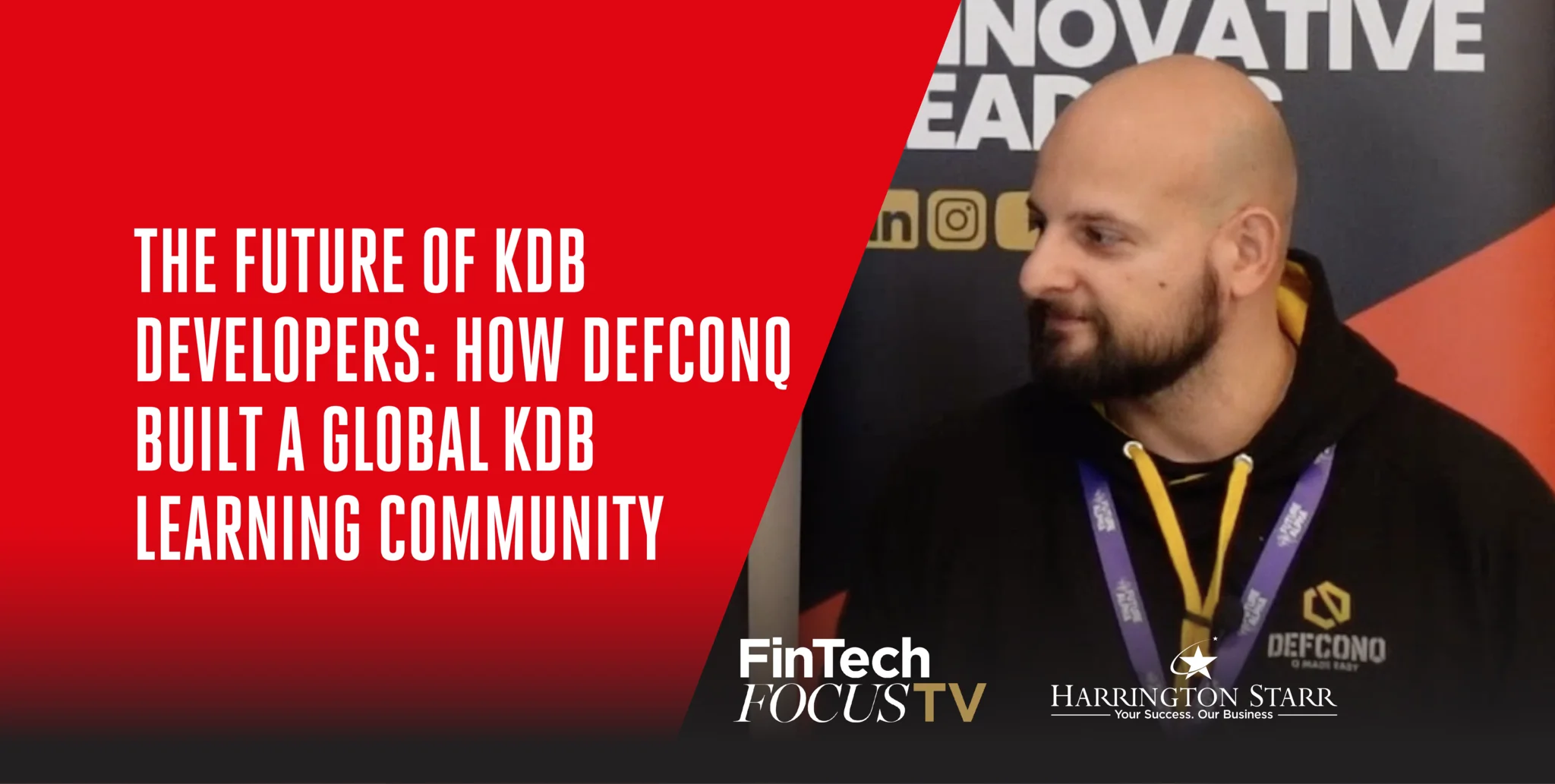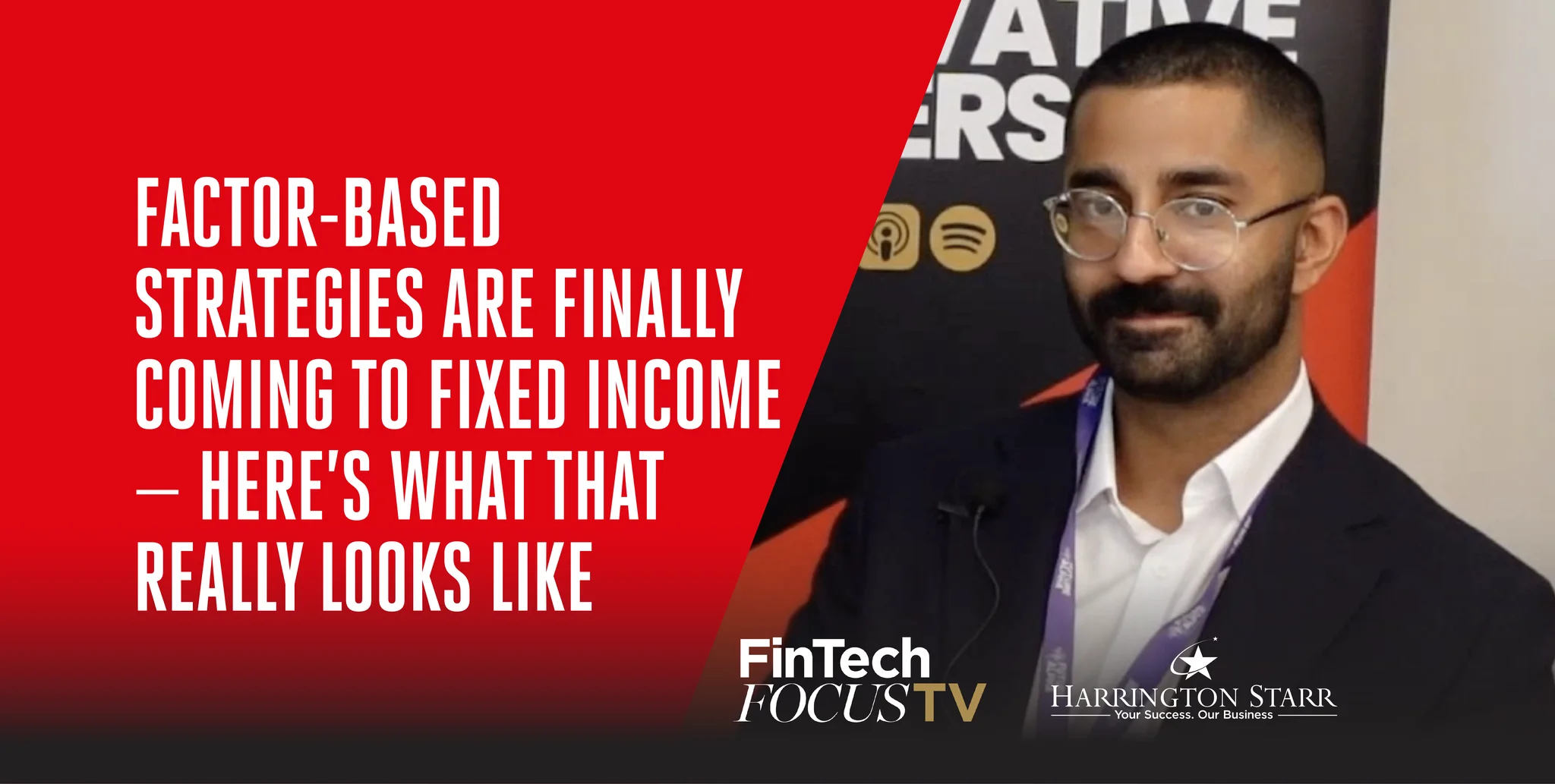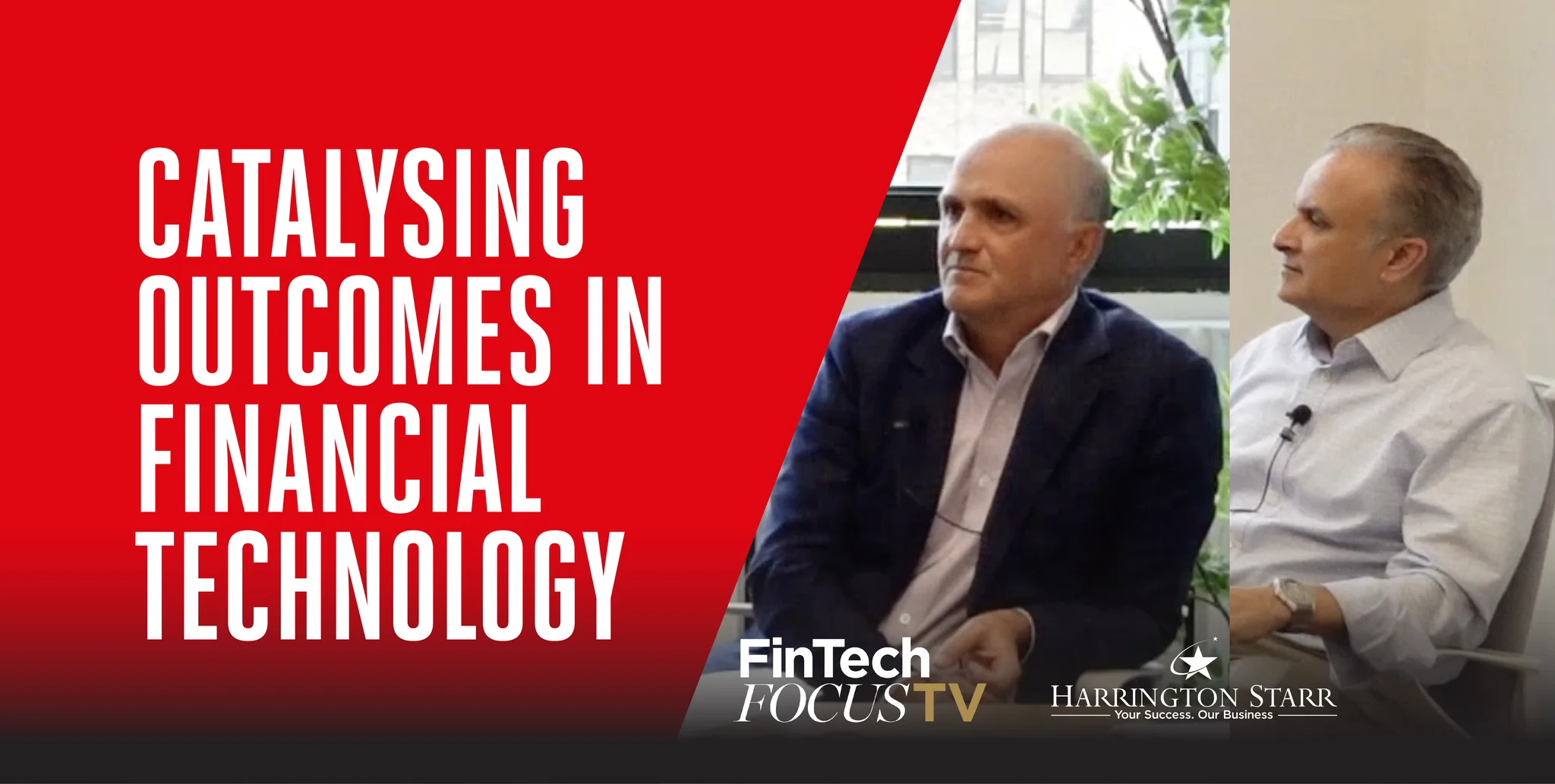Inside the Hedge Fund Revolution
In the latest episode of FinTech Focus TV, Toby welcomes Rupak Ghose, Strategic Writer and Advisor, for an in-depth discussion about the transformation of hedge funds, the evolution of market structure, and the growing role of FinTech across global finance. Having built a multifaceted career that spans investment research, corporate strategy, and startup leadership, Rupak provides a uniquely detailed look into how the financial ecosystem continues to shift in 2025.
From Market Analyst to FinTech Strategist
Rupak’s career has been shaped by more than two decades at the centre of financial markets. He began his journey in equity research, analysing banks, asset managers, exchanges, and hedge funds. This period, spent covering some of the most influential names in finance, gave him a solid understanding of how global capital moves and how institutions evolve under pressure.
His next career-defining step came when he joined ICAP, one of the world’s largest interdealer brokers, as Head of Corporate Strategy. Working closely with the company’s founder, Michael Spencer, he led M&A and strategic initiatives during a decade marked by rapid transformation. It was a time when traditional voice broking was giving way to electronic platforms, regulatory reform was reshaping market behaviour, and global trading was becoming increasingly digital.
At ICAP, Rupak was involved in major transactions that defined a generation of market change, including the sale of the firm’s voice business and the eventual sale of its electronic assets to CME Group. These experiences gave him a deep appreciation of how technology, regulation, and business strategy interact in shaping market infrastructure.
After leaving ICAP, Rupak transitioned into the startup world as COO at Galytix, a credit analytics platform. The move from a large financial institution to a small, agile business gave him a new lens on the FinTech landscape. It also demonstrated how technology can empower smaller teams to challenge legacy systems and processes that have dominated traditional finance for decades.
Writing for the Modern Financial Audience
Today, Rupak is recognised not only for his work within financial markets but also for his writing, which has attracted a loyal readership across the hedge fund and FinTech communities. His Substack publication has become a trusted source of long-form analysis on hedge funds, trading, and market structure.
Unlike traditional journalism, which often restricts depth and length, Substack gives him the freedom to explore complex themes in detail. He uses the platform to unpack trends in hedge funds, proprietary trading, and FinTech, areas he knows intimately from experience. His audience spans from portfolio managers and traders to senior executives at major financial institutions, many of whom rely on his work to stay ahead of evolving industry dynamics.
Beyond Substack, Rupak also contributes to major financial publications such as the Financial Times, The Sunday Times, and International Financing Review. His work has covered over 30 in-depth pieces for debt and equity capital markets readers, consistently bridging the gap between specialist technical insight and accessible, narrative-driven commentary.
His ability to write with authority stems from his unique perspective: someone who has both built and analysed financial infrastructure from the inside. Through his writing, he captures the nuances of a sector that’s constantly balancing innovation, regulation, and performance.
The Transformation of the Hedge Fund Industry
A central topic of the discussion is the dramatic transformation of the hedge fund industry over the past decade. Once characterised by small, entrepreneurial teams managing concentrated pools of capital, the sector has expanded into a sophisticated ecosystem of large, multi-strategy institutions.
Firms such as Millennium and Citadel now dominate the market through a scalable, diversified model. These “pod shops” operate hundreds of trading teams under one umbrella, each running distinct strategies while sharing infrastructure, technology, and risk management.
This shift has created enormous institutions, some employing thousands of staff worldwide and generating revenues comparable to investment banks. Hedge funds have evolved from niche players to global powerhouses, with technology and data science at the core of their competitiveness.
The appeal of the multi-strategy model lies in its consistency. Investors, especially institutional allocators, are drawn to the stable, market-neutral returns such firms offer. By distributing risk across teams and asset classes, they have created businesses that are resilient to market cycles.
However, as Rupak highlights, this evolution has also intensified competition for top-tier talent. Traders, quants, and engineers are no longer drawn solely by compensation but by culture, infrastructure, and the sophistication of the technology they can work with. For recruitment businesses like Harrington Starr, this represents a growing challenge, and opportunity, in connecting exceptional candidates with firms leading the charge in quantitative and systematic finance.
The Pressure of Performance and Talent Management
The discussion also explores the demanding performance culture that has become synonymous with hedge funds. Pod shops operate with exacting expectations: performance is closely monitored, and underperformance can lead to rapid capital withdrawal. While this environment has developed a reputation for intensity, it also fuels a culture of excellence, discipline, and continuous learning.
Interestingly, Rupak points out that behind the industry’s tough exterior lies a pragmatic business reality. Terminating a team or portfolio manager is not taken lightly, particularly when hiring involves large guaranteed contracts and complex onboarding. Many firms now balance short-term accountability with long-term development, recognising that sustained success depends on creating an ecosystem where the best talent can thrive.
This focus on people and structure echoes the wider FinTech talent conversation. Across markets, firms are increasingly aware that technology and capital are not their only differentiators, leadership, culture, and the ability to nurture innovation are equally critical.
FinTech, Market Structure, and the Evolution of Trading
Drawing on his ICAP background, Rupak offers a detailed look at how market structure has evolved, and continues to converge with FinTech. The transition from voice to electronic trading, once seen as disruptive, has now become foundational. Platforms such as Tradeweb, MarketAxess, and FXall have permanently altered how institutions trade, communicate, and manage liquidity.
These shifts not only changed market economics but also talent requirements. As trading moved onto electronic platforms, the demand for technologists, quantitative analysts, and data engineers exploded. Today’s markets require professionals who can interpret data, optimise algorithms, and build systems capable of processing massive transaction volumes in real time.
Rupak suggests that similar structural transitions are underway once again, this time driven by automation, cloud adoption, and artificial intelligence. Traditional financial institutions are increasingly collaborating with FinTechs, recognising that innovation is no longer optional, it is fundamental to staying competitive.
This alignment of finance and technology has blurred the boundaries between sectors. Hedge funds, investment banks, and technology firms are now competing for the same pool of highly skilled data and software professionals. For firms like Harrington Starr, specialising in FinTech recruitment, this intersection defines the future of hiring, a market where adaptability, technical fluency, and cross-sector understanding are paramount.
Building a FinTech Moat: Differentiation in a Crowded Market
As Toby and Rupak shift to discussing FinTech business models, the conversation turns towards differentiation, what makes a FinTech genuinely investible and sustainable. Rupak stresses that the key lies in establishing a strong moat: a combination of proprietary technology, market understanding, and commercial strategy that cannot easily be replicated.
He notes that B2B FinTech in particular operates on trust, long procurement cycles, and relationship-driven sales. Success depends on credibility as much as product excellence. Reference clients, security assurances, and compliance credentials are essential in convincing major banks and asset managers to adopt new systems.
This insight aligns closely with the challenges many FinTech startups face. Scaling requires more than innovation; it requires leadership capable of navigating complex financial ecosystems. For FinTech founders, hiring executives who understand both regulatory nuance and enterprise sales is critical.
For Harrington Starr’s clients, this reinforces a consistent message: recruitment cannot be treated as a transactional function. Whether building a product team or expanding commercial operations, firms must invest in talent with the experience to bridge the worlds of finance and technology.
The Brevan Howard Case Study: Lessons in Evolution
Throughout the conversation, Rupak references his recent analysis of Brevan Howard, one of Europe’s most high-profile hedge funds. Once managing $40 billion in assets, the firm faced a dramatic contraction before rebuilding to around $30 billion in recent years. While the recovery has been impressive, the firm’s structure reflects the challenges of adapting legacy models in a rapidly modernising industry.
Unlike its US counterparts that have fully embraced the multi-strategy model, Brevan Howard operates with a hybrid structure. This approach provides flexibility but also creates challenges in scaling technology and risk infrastructure to the same degree as firms like Millennium or Citadel.
Rupak’s examination of Brevan Howard illustrates a broader trend: even established leaders must continuously adapt. The hedge fund sector has entered a new era defined by scalability, institutionalisation, and relentless innovation. Those that fail to evolve risk losing relevance, regardless of history or reputation.
Convergence of Hedge Funds and High-Frequency Trading
Another critical theme explored is the convergence between hedge funds and high-frequency trading (HFT) firms. Historically, these entities operated in distinct spaces, hedge funds pursuing longer-term strategies while HFTs focused on ultra-short-term execution. Today, however, the boundaries are fading.
Firms such as Jane Street, Hudson River Trading, and Citadel Securities now operate models that incorporate both speed and strategic positioning. Advances in data analysis, machine learning, and infrastructure have enabled these companies to expand their scope, moving beyond pure arbitrage into areas once dominated by traditional hedge funds.
This convergence has created new demand for multidisciplinary talent. Quantitative engineers, data scientists, and product managers now work side by side, blending trading intuition with technological capability. The skills that drive success in these firms, coding proficiency, statistical insight, and business awareness, mirror the evolving demands across the broader FinTech industry.
For FinTech professionals and recruiters alike, this evolution highlights the need for cross-functional expertise. As financial firms continue to merge technology and trading, recruitment strategies must reflect a world where innovation and execution are inseparable.
Writing, Influence, and the Power of Independent Thought
The conversation concludes with a reflection on the influence of writing and independent analysis within the financial community. Rupak’s Substack, now read by thousands of senior professionals across hedge funds and investment banks, demonstrates how thoughtful, long-form content continues to shape industry thinking.
His audience includes portfolio managers, CIOs, and senior executives at leading firms, individuals seeking not just news, but perspective. In an era where information is abundant but insight is scarce, his work exemplifies the value of clarity and originality.
For Toby and Harrington Starr, this ties back to a consistent theme throughout FinTech Focus TV: the importance of thought leadership, expertise, and storytelling in shaping the future of finance. The firms and professionals who will thrive are those capable of combining deep knowledge with the ability to communicate and connect.
The Future of Talent in Financial Technology
The episode ultimately reinforces one key takeaway, finance and technology are no longer separate domains. From hedge fund innovation to FinTech growth, success now depends on the quality of people driving change.
Whether it’s data scientists building trading infrastructure, engineers optimising risk systems, or leaders guiding transformation, the competition for talent has never been more intense. Hedge funds, banks, and FinTech startups are all searching for professionals who can think strategically, act decisively, and adapt continuously.
As a FinTech recruitment specialist, Harrington Starr sits at the heart of this evolution. The insights shared in this conversation not only illuminate the direction of financial markets but also highlight the critical role recruitment plays in enabling growth and innovation.






